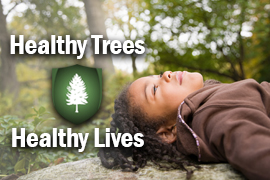 Texas A&M Forest Service offers careers that can take you anywhere from a wildfire line defending lives and homes, to a forest protecting and conserving Texas natural resources to a computer working on a new application to create solutions for Texans across the state.  Research reinforces what much of the forestry community already knows — that trees have a positive impact on human health. Learn more.  Join us as we celebrate the landmark of our state forest’s centennial year. Texas state forests are essential to our ecosystems, communities, and growth in the forestry industry.
|
| NEWSROOM |
|
|
|